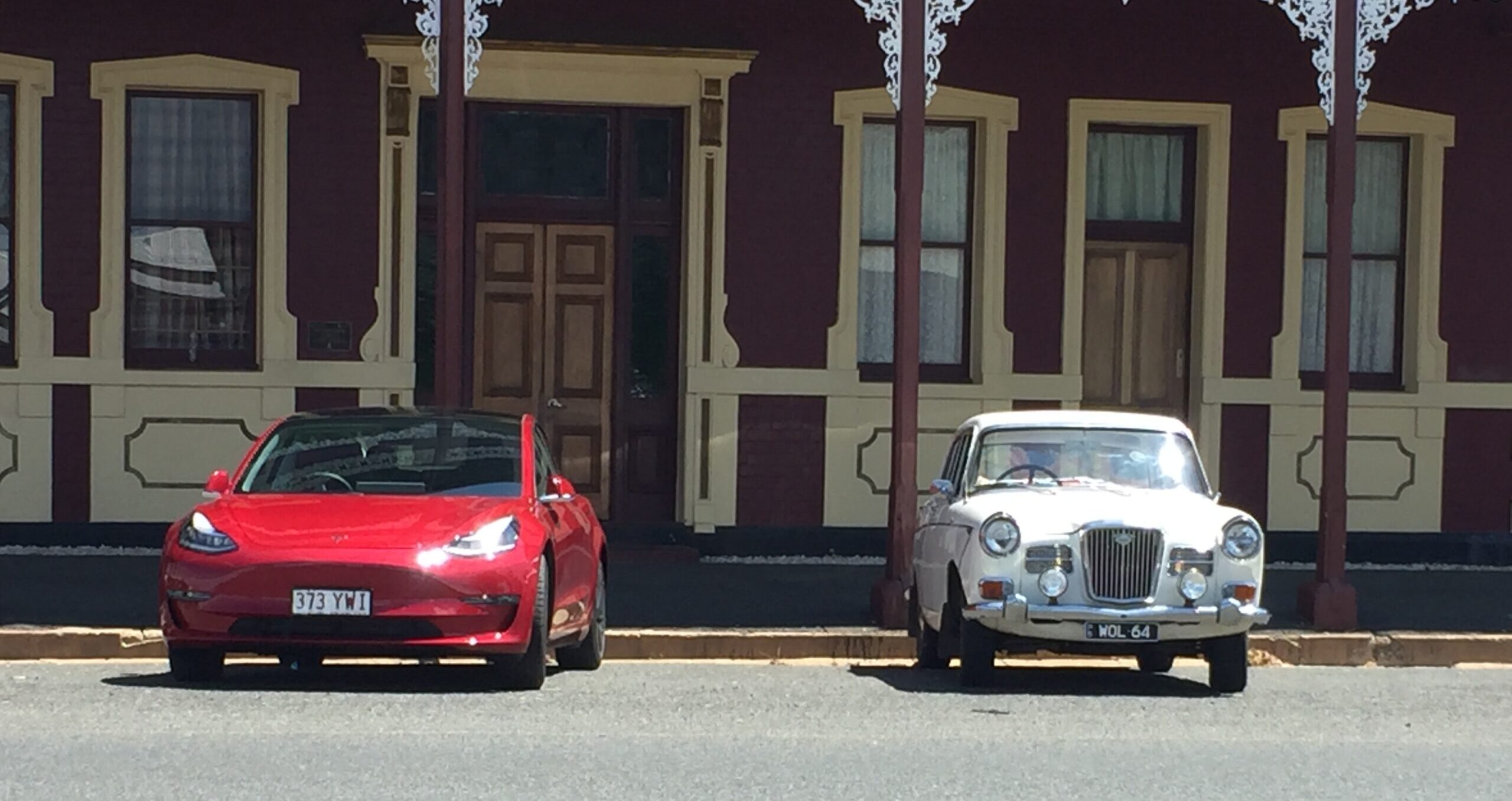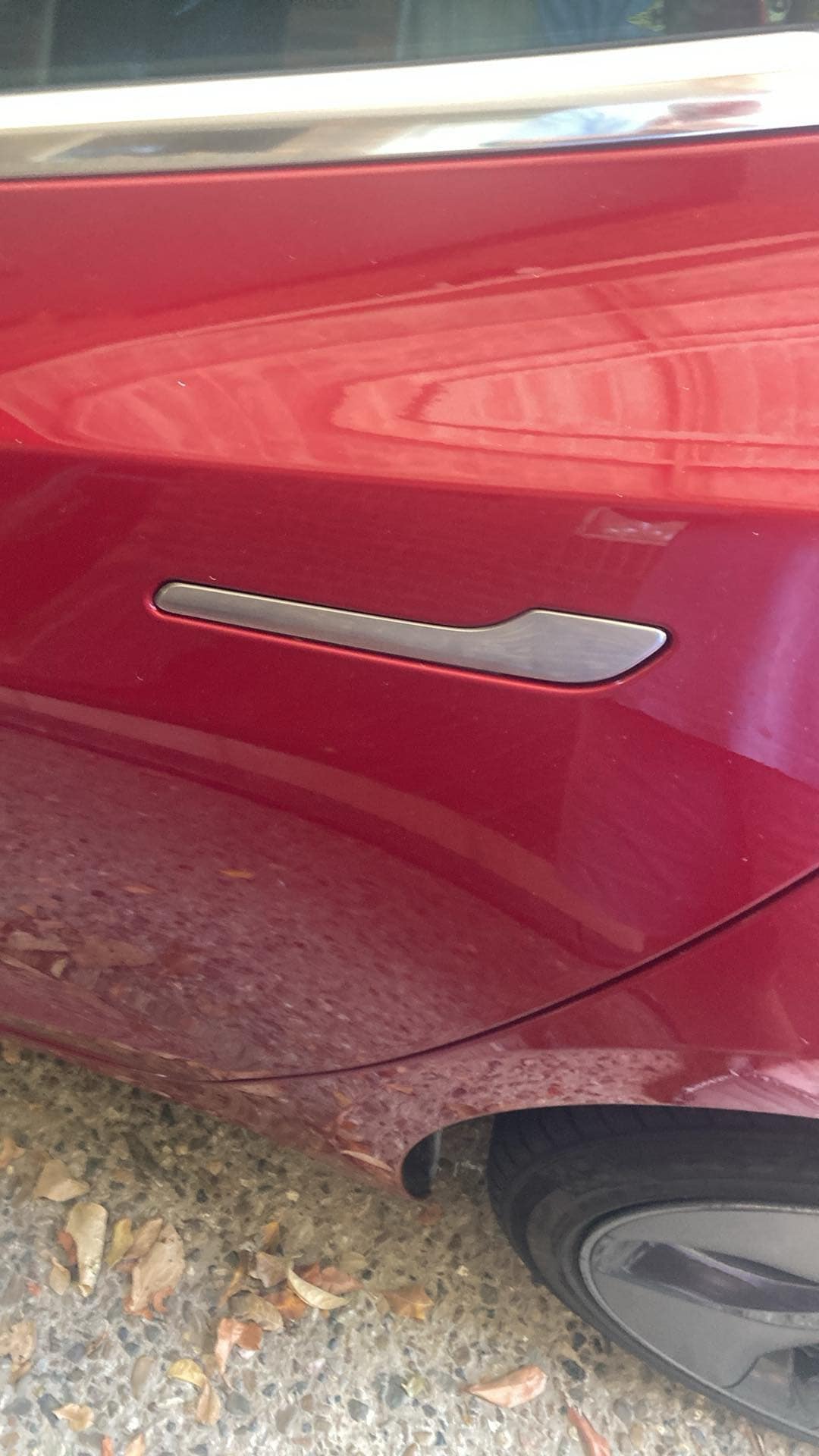Sign up for daily news updates from CleanTechnica on email. Or follow us on Google News!
Disclaimer: I am not encouraging anyone to steal any vehicle — not even a Red Rocket tricycle.
How do you find your Tesla? This is a question we get asked many times as we demonstrate our Tesla Model 3 at EV events and motor shows throughout Queensland, Australia. Frustrated by the vagueness of the question, I have started to answer with: “Where I left it, they are very hard to steal!” I get sarcastic as the days wear on.
Caution: This is meant to be a humorous article. Like most FUD (Fun, Understanding and Delight), it contains fragments of truth, mixed with hyperbole and other allergy triggers. Want something more serious — try this.
Prompted by an email from a fellow Tesla owner, I thought it might be worth a tongue-in-cheek article for CleanTechnica in these most serious of times. Robert wrote: “… because of the tech within most electric vehicles, it would make it harder to steal. This would require a greater degree of intelligence to successfully steal an EV. Those professional thieves will always pick on low hanging fruit that have the greatest return. That is resale value as a vehicle be it parts or just 2nd hand.” If you have the IQ to tackle a Tesla, you could probably get an easier and higher paying job.
“Tesla vehicles are rarely stolen due to their advanced security features, high-tech connectivity, and low demand for parts. The consensus is that the difficulty in stealing and reselling Teslas, combined with the ease of tracking them, makes them unattractive targets for thieves. With a Tesla you would have to be so incredibly good with coding/hacking that stealing a Tesla would be such a poor use of your talents.”
I know a little about the anti-theft capabilities of my 2019 Tesla Model 3, but very little about such features on other EVs, so I reached out to some of the many Facebook communities dedicated to electric vehicles in Australia. Some implored me not to write an article on how to steal an EV, as thieves might make it a challenge event (Tesla already does that for hackers). One suggested the good old steering lock! Others told me funny stories of mistaken identity: “They had tried to ‘steal’ someone else’s Tesla in a case of mistaken identity in a multi-level parking lot.” I have made the same mistake myself — finding Tess. Honk for me baby!
There’s also the story where a would-be thief tried to drop the battery out of a Tesla in the Brisbane Airport long-term parking and ended up in dire need of assistance as the damaged battery resting on some of his more delicate body parts moved into thermal runaway. Of course, this could be an urban legend.
My Tesla was ordered in April 2016 and delivered in September 2019. I had plenty of time to read articles and watch videos as the Tesla Model 3 spread across the United States. One recurring theme was that of security. Apparently, some new owners thought that it would be okay to leave valuables, including their laptops, in the back seats of their very distinctive, expensive new EVs. Come on, I wouldn’t even do that in my Wolseley!

Quelle Surprise! Young entrepreneurs discovered that a gentle tap with a hammer would break the window and yield profit making treasure. Tesla, in response, installed Sentry mode to make use of the already existing cameras to record such behaviour. The next wave of news was video of people attacking Teslas, stealing stuff, keying cars, urinating on them with the occasional funny video of a cute kid doing some rap dance. Occasionally some bum crack was displayed also. Sadly, Tesla had to change the face of Sentry mode. I miss you, Hal.
Then came the appeals from police for Tesla owners to supply vision taken by the cars to identify perpetrators of more serious crimes. This occurred in Norway. Tesla owners had moved from being “virtue signalling wankers” (as my brother in law called me) to being a “caped crusader”…“To the bat cave Robyn, we need to recharge!”
While we waited patiently for our delivery, our car was getting better. All at no extra cost. We would have no trouble finding Tess.
On delivery we found that the greatest security feature of the car was the door handles. After we had mastered them, under instruction from the Tesla technician, then came the tasks of teaching our friends, neighbours and family. “You push in the fat bit, then pull on the skinny bit.” Of course, ours being an older Fremont Tesla 3, they couldn’t work out how to exit the car either. We have a minus sign on a button, easy to miss.

The layers of security on a Tesla are quite intricate. First, you have to know that you need someone’s phone. Then, you have to know the code that opens the phone. Then, there is that door handle thingy, doovey. I am sitting in the car and it is asking for a pin number, WTF? By now you might be looking around for something easier to steal. If you are sitting in the new Highland, you might be there for a while trying to find the gear stick. It’s a button, stupid.
Unless, of course, you have a gun. This is serious stuff now. The most famous Tesla theft in Australia is that of Nick Kyrgios’ lime green Model X. According to The Guardian newspaper, “Kygrios was inside his family’s Canberra home about 8:30am when a masked man wearing all black knocked on the front door, describing himself as ‘Chris’. His mother answered the door to find a long-barrel firearm pointed at her.” She was forced to hand over the key and give him some basic information on how to drive the car. However, Nick and his mum got the last laugh, as Nick used the phone app to track the car, slow it down, honk the horn, open and shut the windows, turn on the heated car seats while turning off the air conditioning — all the fun things.
“Chris” has been in custody since March. “The Australian Capital Territory Supreme Court has referred the man to the Drug and Alcohol Court for assessment ahead of any sentencing.” Hopefully he will stay in jail for some time. He has pleaded guilty to robbery with an offensive weapon.
And Nick is coming back to tennis (now that all his previous nemeses have retired).
So, what car to steal? According to Axios, “thieves find old-fashioned, gas-guzzling muscle cars more enviable than environmentally friendly EVs.” Wouldn’t want to be accused of being a virtue signaller, after all! In the USA, the GMC Sierra and the Chevrolet Silverado hold the top two spots. I wonder if that will change as GM goes electric.
In Australia, “The top five most commonly stolen vehicles, according to the RAA’s data, included; the (GM) Holden Commodore, Mazda 3, Toyota LandCruiser, Toyota Camry, and Toyota Corolla.”
On a business trip to Canberra (in the ACT), Majella and I hired a new Toyota Corolla. We were concerned about damage to the car and didn’t want to have to pay up the insurance excess. We parked it as far away from other cars as possible, expecting that it would be safe. But, no, some energetic individual with a grudge against new cars decided to walk across the rooftop car park just for the pleasure of keying this innocent vehicle. Seven hundred excess dollars later… Today, I would park it between two Teslas and feel more secure.
I hope that you have had a few laughs. The takeaway is that, with Tesla, the future is bright, electric, and very secure!

Chip in a few dollars a month to help support independent cleantech coverage that helps to accelerate the cleantech revolution!
Have a tip for CleanTechnica? Want to advertise? Want to suggest a guest for our CleanTech Talk podcast? Contact us here.
Sign up for our daily newsletter for 15 new cleantech stories a day. Or sign up for our weekly one if daily is too frequent.
CleanTechnica uses affiliate links. See our policy here.
CleanTechnica’s Comment Policy



